New Research Confirms Tendency for Faster Hurricane Intensification
10/31/2023, 8:52 am EDTA Mild Winter EXCEPT for NEW Cold Risk in January for Europe
11/06/2023, 3:31 am EST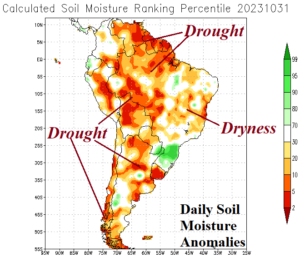
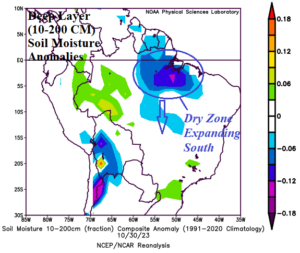
Fig. 1-2: NOAA/CPC daily soil moisture anomalies and the deep layer (10-200 CM) soil moisture anomalies across Brazil.
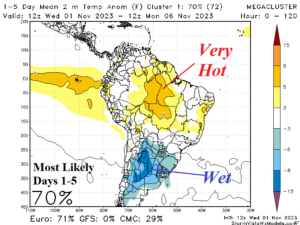
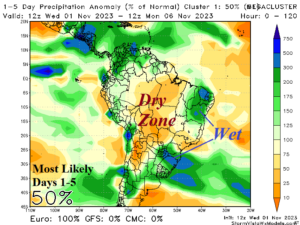
Fig. 3-4: Mega-cluster ensemble “most likely” temperature anomaly and percent of normal rainfall across South America for the next 5 days.
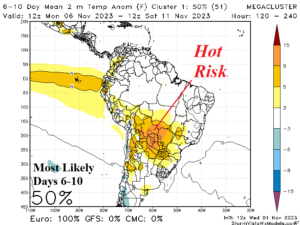

Fig. 5-6: Mega-cluster ensemble “most likely” temperature anomaly and percent of normal rainfall across South America for the 6-10-day period.
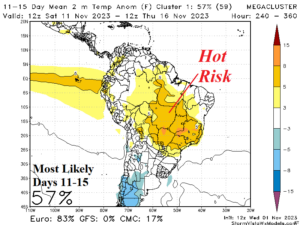

Fig. 7-8: Mega-cluster ensemble “most likely” temperature anomaly and percent of normal rainfall across South America for the 11-15-day period.
Discussion: Climate Impact Company summer 2023-24 precipitation forecasts for South America identify Central Brazil as an area likely to observe worsening drought. Currently, NOAA daily soil moisture anomaly analysis reveals widespread drought areas lingering in South America most focused on Chile, Argentina, and northern continent (Fig. 1). Dryness also exists across many parts of Brazil. Of concern is deep layer (10-200 CM) soil moisture deficits caused by long-term dry climate shifting southward into Central Brazil (Fig. 2). The combination of shallow and deep layer dry soils can lead to fast-evolving drought.
Unfortunately, the dry/hot pattern required to inspire worsening drought may be arriving. The mega-cluster ensemble utilizing pieces of ECM, GFS, and CMC model output is reviewed through the next 15 days. In the short-term forecast through this weekend, a cool air mass spreads north across Argentina (Fig. 3). The frontal boundary triggers heavy rain most-focused on Southeast Brazil to Argentina (Fig. 4). North of the wet weather area, Central and East Brazil are dry.
In the 6-10-day period, the “most likely” anomalous hot weather zone is across central continent (Fig. 5). In this zone which includes central and eastern Brazil, dryness is dominant (Fig. 6). Wet weather continues to focus on far Southeast Brazil and Uruguay.
In the extended range, the persistent dryness in Central and East Brazil is stronger and attendant anomalous heat risk greater (Fig. 7-8). Central and East Brazil drying soils are underway in this late spring pattern and deep layer soil moisture deficits are likely to increase in Central Brazil.
